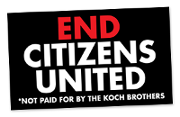Biblio
Filters: First Letter Of Last Name is S [Clear All Filters]
(2002). Red Hat Linux Internet Server.
(2001). Nothing personal, just business: a guided journey into organizational darkness.
"Witnessing, bearing witness, and writing for others to see and hear—these are the beginning of hope for genuine change. If I cannot alter what I see, I can at least attest to the fact that it happened and is still happening." (p. xvi)
(2001). Driving Digital: Microsoft and Its Customers Speak About Thriving in the E-Business Era.
"If you think about the traditional corporate structure, what determines who's going to be a part of the debate? Simple: the people who are allowed in the meeting room." (p. 78)
"Two issues: Can your senior executive group adjust to a culture in which folks at the most junior levels of the organization have access to all but the most highly sensitive information about the company? And can they adjust to a culture in which they will receive e-mails from those same junior level folks? Will they be open and responsive to those e-mails? Are the managers at levels between the junior sender and senior executive who receives the e-mail going to revolt at not being consulted before the message gets sent, probably not even cc'ed?" (p. 84)
"Two issues: Can your senior executive group adjust to a culture in which folks at the most junior levels of the organization have access to all but the most highly sensitive information about the company? And can they adjust to a culture in which they will receive e-mails from those same junior level folks? Will they be open and responsive to those e-mails? Are the managers at levels between the junior sender and senior executive who receives the e-mail going to revolt at not being consulted before the message gets sent, probably not even cc'ed?" (p. 84)
(2001). DB2 Universal Database v7.1.
(2001). Learning Perl, Third Edition.
(2000). Americans with disabilities : exploring implications of the law for individuals and institutions.
"The key mediating concept here is self-respect. Suppose we agree with Rawls that self-respect is a vital primary good, something of great importance that any rational person is presumed to want. Now, given actual human psychology, self-respect is—to a considerable degree—dependent on other people's affirmation of one's own worth. And in modern advanced societies, employment, earnings, and professional success are, for better or worse, positively correlated with social assessments of an individual's value. Further, beyond the reactions of other people, work and career identifications form significant parts of some people's conceptions of themselves and their own worth; hence these identifications may contribute directly to the creation and sustenance of self-respect, and their absence will frequently have the opposite effect." (p. 179)
(2000). Breaking the Watch: The Meanings of Retirement in America.
"For most individuals, the formal and public recognition of retirement is commonly marred by the pale content of the official rites mean to dramatize it. These ceremonies tend to be formulaic, predictable, and cliched...
The private and informal ceremonies created for retirees prove to be more fulfilling because of their style, their substance, their process, and their audience. They allow people to leave work on a good note, and give them a sense of control over this transition." (p. 54)
The private and informal ceremonies created for retirees prove to be more fulfilling because of their style, their substance, their process, and their audience. They allow people to leave work on a good note, and give them a sense of control over this transition." (p. 54)
(2000). Imagine : what America could be in the 21st century : visions of a better future from leading American thinkers.
"People want it all. They feel, quite understandably, that is is their birthright. They want the fast life of converging technology, global roaming, rising opportunities, adrenaline-pumping challenges, and life at Web speed—and they want to spend time with their families and friends, meditate, keep fit, relax, and play. It's not about work/life balance; it's about the complete integration of work and life, a holistic, seamless fit between these two and every other aspect of life. The new-story leader encourages employees to engage their creative juices while they are walking along a beach, or to shop for groceries online while they are at work and not be self-conscious—indeed, to be unaware of the difference. Life is whole, not seperated into two solitudes called 'work' and 'life'. " (p. 129)
(2000). Sorting Things Out: Classification and Its Consequences.
"Information technology operates through a series of displacements, from action to representation, from the politics of conflict to the invisible politics of forms and bureaucracy. Decades ago, Max Weber wrote of the iron cage of bureaucracy. Modern humans, he posited, are constrained at every juncture from true freedom of action by a set of rules of our own making. Some of these rules are formal, most are not. Information infrastructure adds another level of depth to the iron cage. In its layers, and in its complex interdependencies, it is a gossamer web with iron at its core." (p. 320)
(2000). Work Rage: Identify the Problems, Implement the Solutions.
"Ocassionally, I encounter and organization that really does practice what it preaches, or 'walks the talk'. But I can say with great certainty that the companies that really do a lot of talking and walking are few and far between. There is a lot of talking but very little walking out there in the big wide world of management.
The potential for rage in these controlling organizations is going to be higher, and for several reasons. When you have a mentoring, coaching, and collaborative management style, employees tend more toward higher productivity, efficiency, and effectiveness, and there is a happier workplace atmosphere. Conversely, when there is a domineering, controlling, or even bullying environment, the employees feel threatened, are less productive, feel highly stressed and are unhappy." (p. 53)
The potential for rage in these controlling organizations is going to be higher, and for several reasons. When you have a mentoring, coaching, and collaborative management style, employees tend more toward higher productivity, efficiency, and effectiveness, and there is a happier workplace atmosphere. Conversely, when there is a domineering, controlling, or even bullying environment, the employees feel threatened, are less productive, feel highly stressed and are unhappy." (p. 53)
(2000). Headhunters Confidential.
(2000). JMP Start Statistics.
(2000). Special Edition: Using Samba.
(1999). Html Complete.
(1999). Jini? Specifications, The.
(1999). Mobbing: Emotional Abuse in the American Workplace.
"But employees who are committed to their work are often very loyal. They believe in the goals of the organization. They care about the organization's reputation. They keep quiet, are ambivalent about taking action and may not readily seek assistance, inside or outside the organization. They suffer for a longer period. Rarely do such individuals reveal their personal agony. And often they do not understand the complex reality of their situation."
(1999). The Overload Syndrome: Learning to Live Within Your Limits.
"The recent book Finding Time: How Corporations, Individuals, and Families Can Benefit from New Work Practices describes work stress among software engineers, thus highlighting issues important throughout many occupations. 'Knowledge workers, like senior executives, experience immense pressure to . . . put work above all else,' observes University of Michigan business professor Leslie A. Perlow, who studied a Fortune 500 company to write the book. 'Engineers believe that they must be perceived as always willing to "accommodate the demands of the work." . . .They should be willing to do whatever is asked, not just in terms of producing output but also in terms of working whatever hours are deemed necessary to get the job done.' As long as nobody's getting hurt, what's the big deal? The big deal is—somebody's getting hurt." (p. 179)
(1999). A Safe Place for Dangerous Truths: Using Dialogue to Overcome Fear & Distrust at Work.
"In a strict hierarchy, when someone in power has the reputation for retribution, it would be irresponsible to encourage the discussion of dangerous truths. One time I believed a manager's self-description as 'open-minded and empowering.' Introducing dialogue into her group was a mistake. She was not open-minded and had a reputation for shooting the messenger. The result was agony—two hours of people squirming in their seats, eyes darting longingly toward the door, and no one daring to tell the truth." (p. 194)
(C)2014 CC-BY-NC 3.0, workcreatively.org











 ]
]